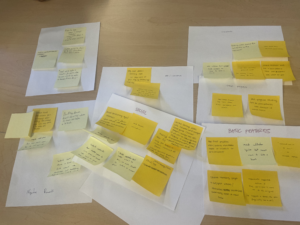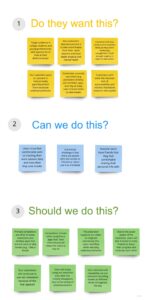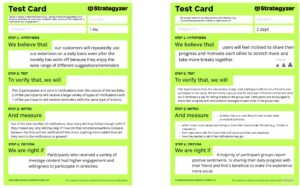Solution Ideation
After our intervention study and synthesis, we took those insights and results and began ideating solutions in class. After ideating individually on post-it notes, we came back together and grouped the common ideas we had, as shown below.

Some of the most salient features/ideas discussed include:
- Incorporating a social aspect to our solution (e.g., friends can send each other reminders or nudge each other)
- Allowing users to input their schedule or set intervals at which they would like to receive notifications (e.g., every hour)
- Providing a way for users to track their progress and set goals
After this initial ideation, we then utilized half-pages to sketch out and discuss some of these ideas more in depth.

From these concept sketches, it seemed clear that we, as a team, leaned towards/favored the following features/ideas:
- Either a desktop app or browser extension rather than a mobile app due to the fact that people use their computers to do work and often disregard mobile notifications during work sessions
- Including a social aspect (although the extent of this is unclear)
- Using pop-up windows to remind people of breaks
- Having a timer or a small window that stays in the corner of the screen (e.g., “time until next break” countdown)
Assumption Mapping
With these ideas in mind, we discussed and mapped what is feasible, desirable, and viable. We placed these assumptions in a 2×2 with important to unimportant and known to unknown. To see the text better, you can view our Miro board here.


Testing Assumptions
After discussing as a team, we decided to test the following assumptions from the important and unknown quadrant of the matrix:





Comments
Comments are closed.